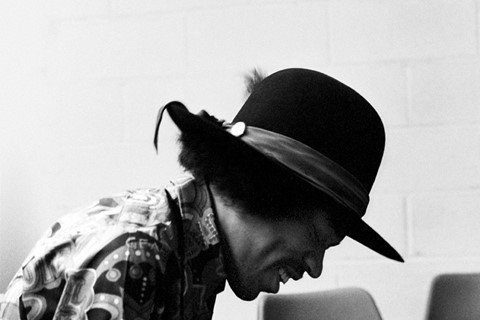On the 45th anniversary of Jimi Hendrix's death, renowned producer and engineer Eddie Kramer talks us through his beguiling portraits of the rock legend
It has been 45 years to the day since the tragic passing of rock icon Jimi Hendrix at the age of 27. His mainstream career in music lasted just four years, but his legacy as one of the most unique instrumentalists (and sartorialists) of the 20th century still burns bright. To many Hendrix was, and remains, a legend. But what of the man himself? “He was a genius, there’s no question, but he was also a fantastic human being,” renowned record producer and engineer Eddie Kramer tells AnOther. “He was very shy but what a fabulous sense of humour he had – biting and sarcastic.” And Kramer should know. A key member of the guitarist’s inner-circle, he worked on all four of Hendrix’s albums and, as an avid and skilful photographer, has a remarkable array of visual documentation to prove it.
Kramer was born in South Africa in 1942, to an English mother, and relocated to London in the early 60s to pursue a career in music engineering. “By 1962, I had started in the business as a teaboy,” he says, “and by ’67 I had worked my way up to Olympic Sound Studios in Barnes, which was where I met Jimi.” The two immediately forged a connection: “I was trained as a classical pianist, and I loved jazz and rock, so my mind was open to any sound but when Jimi plugged in and played, I thought, ‘Oh my god, how am I going to record this huge sound?’ I had to figure out how to make the music sound bigger on tape than it did in the control room, and luckily I did and he was all smiles! That started the whole relationship.”
“Jimi was very shy but what a fabulous sense of humour he had – biting and sarcastic” – Eddie Kramer
It was during the early days of his career that Kramer bought a camera – from a fellow engineer for ten pounds – and began capturing the various bands he was working with (think The Beatles, David Bowie, Led Zeppelin). “Nobody dared stop me,” he laughs. “I was just playing with this bloody camera and nobody said a thing. Not like today when you need to submit 50 applications for one shot.” Today sees the opening of a new exhibition of Kramer’s Hendrix portraits, at Proud Camden – an intimate and utterly captivating series that gives a rare insight into Hendrix’s life both on and off stage. We see Hendrix as Kramer saw him – as a prodigy, but equally, and more unusually, as a friend. “I don’t think I knew it at the time,” he muses, “it was only many years after he had died that I realised the impact the man had on the world. The music he created will live on forever.” Here, we sit down with Kramer to discover some of the excellent stories that accompany our favourite photographs from the show.
Jimi Hendrix at the Record Plant, NYC, 1968 [above]
“This photograph was taken in 1968, about a month after I’d arrived in America from England. Jimi was in the middle of recording Electric Ladyland, a marvelous album. If you look at all the photographs, Jimi always dressed amazingly well to the point where he set the fashion standards. He used to get a lot of his clothes from a shop called “Granny Takes A Trip”. It was in Chelsea, on the King’s Road, and we all used to go; he was the fashion-forecaster and we used to try and emulate him. In this photograph he’s staring down at a wah wah pedal which wasn’t functioning properly, so he’s peeling up the cables and trying to figure out what the hell is going on!”
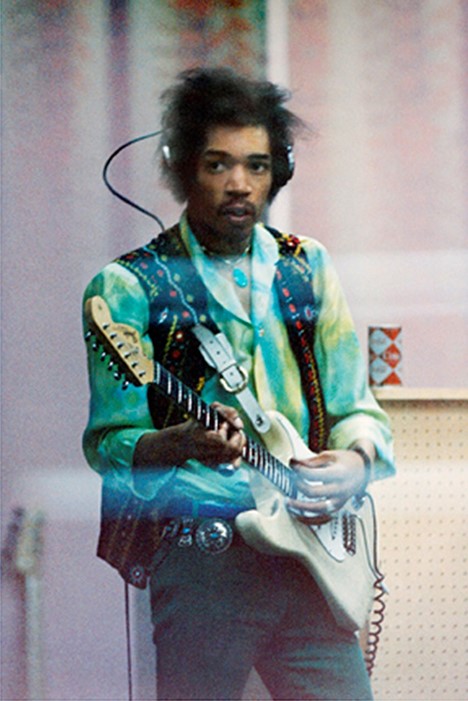
'From the Other Side of the Glass', 1968
“This was from the same period, probably a week before because he’s got a different shirt on. This is one of my most favourite photographs of him. It captures him right at the moment of creating a solo and if you look at the expression on his face, it’s amazing – so intense. He’s staring right at me on the other side of the glass. When I stand back and look at it now, his presence was so immense and his concentration was so laser-like, that you almost feel like he’s playing.
"What is very interesting from a guitarist’s point of view is how he’s holding the neck of the guitar – with his thumb wrapped around it. This was part of his technique: his thumb was so huge that he could bar the whole neck while he was playing which created a very unique sound. Also, behind his left shoulder is a very rare Coca-Cola can, called the Harlequin design, which only came out for about a year about ’68. That coke can showed up on Mad Men when they were trying to recreate that so that just shows you what an impact it had.”
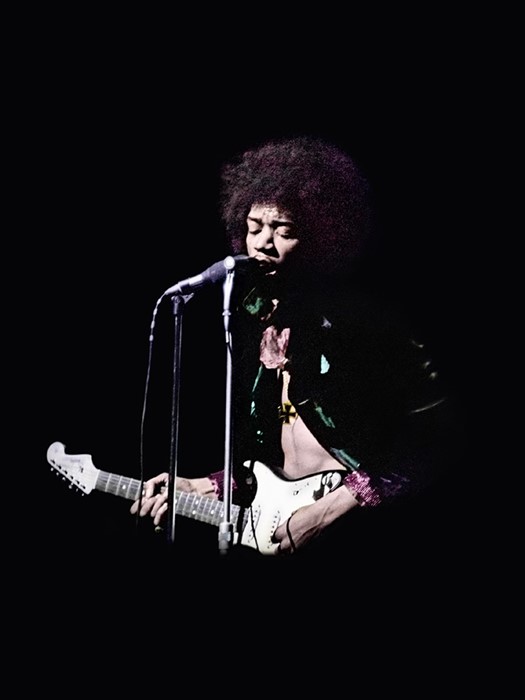
Jimi Hendrix at Saville Theatre, London, 1967
“The story behind this picture is a really interesting one. There was a theatre in Camden called the Saville Theatre which was owned by the Beatles’ manager, Brian Epstein. Jimi played there a couple of times but, on this particular occasion, he found out that The Beatles were going to be in the audience, so he said, ‘Oh, I’m going to surprise them.’ Sgt. Pepper had just come out and he’d got an advanced copy of it that he’d been studying. I walked up to the dressing room just before the show started, and he’s sitting in the corner with a tiny little record player, and Mitch Mitchell and Noel Redding crowding around him, and he’s showing them the chord sequence to the song.
"A few minutes later, they go downstairs, jump on the stage and he opens with Sgt. Pepper and the Beatles can not believe what they’re hearing – their jaws just dropped to the floor. When I spoke to Paul McCartney years later he told me that George looked at him and said, ‘Come on man, we’ve got to go back to the studio and re-do the bloody guitars.’”
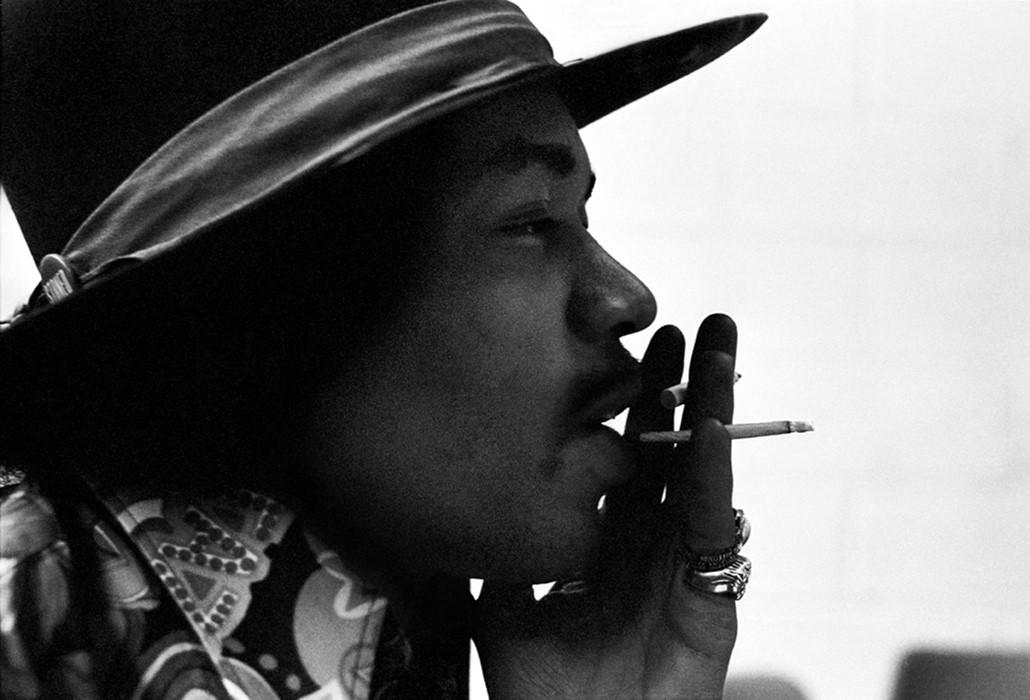
'Stereophonic Smoking', 1968
“This is another one taken in Record Plant Studios in New York City while recording Electric Ladyland – we made it over 2 months. This image is always a big hit with students when I show them in my lectures. We always get someone who says, 'Oh, check this out – it’s a joint and a cigarette!' Now I will never endorse that, of course, because it’s illegal, however that’s what he did. It’s lovely because you get this nice profile of him and you see the rings on his fingers. The rings are also very crucial because he would use them sometimes to make slide guitar noises.”
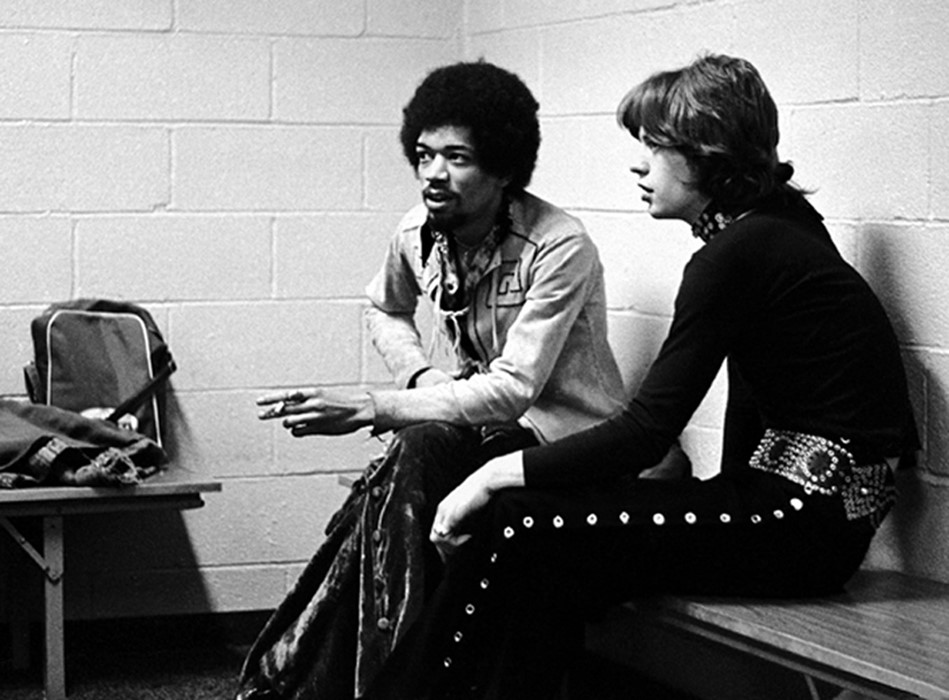
Hendrix and Mick Jagger backstage at Madison Square Garden, NYC, 1969
“This is a lovely shot, I mean it doesn’t get much better than when you put Mick Jagger and Jimi Hendrix together. Jimi called me up on the occasion of his birthday – it was November 27th 1969, I believe – and he says, ‘Hey man, it’s my birthday and I’m going to see the Stones, do you wanna come with?’ So I said, ‘yeah, sure.’ Mick and Jimi are just chatting away there, you can just imagine what they’re talking about, but what’s fascinating to me is the bag on the left. It’s Jimi’s TWA flight bag – he always walked around with it on his shoulder and inside, rolled up, was the Bob Dylan song book. He loved Bob Dylan and he used the book as a reference point, so that’s what was inside that bag.”
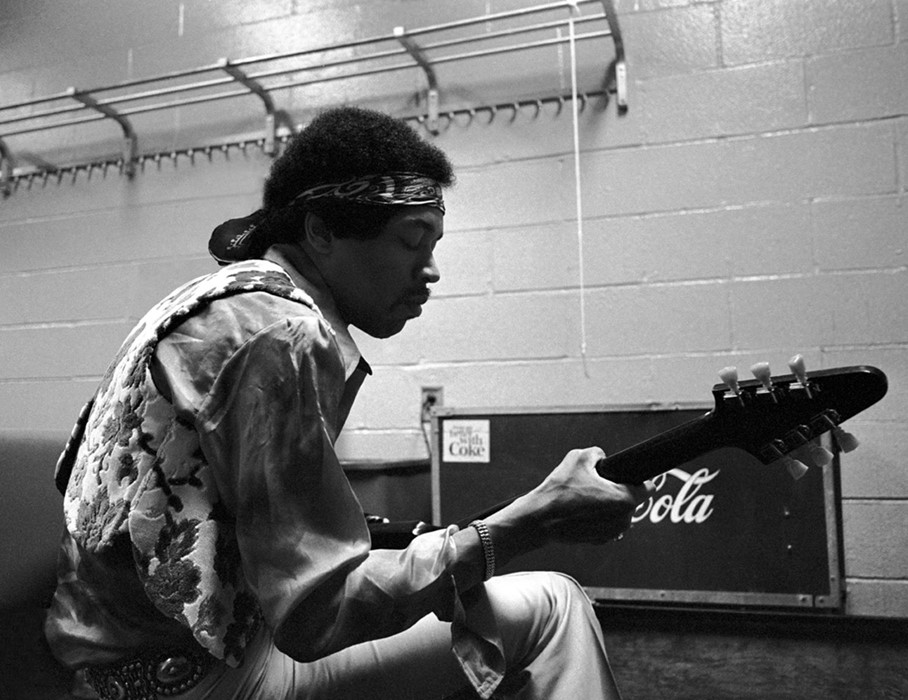
Jimi Hendrix, Madison Square Garden, 1969
“Jimi played Madison Square Garden twice and on this particular occasion I was there backstage, shooting photographs of him. This was unusual because it shows him playing the Gibson Flying V, a guitar he often used backstage because it was a very easy guitar to play blues on, but he never really played live. He liked the feel of it though, so here he was just rehearsing and jamming backstage with a small amp. There’s a huge Coca-Cola machine in the background and if you look really, really carefully, you can see a string hanging from the shelf above it. At the end of that string is a can opener, one of those ones with the points on, kind of a funny detail!”

Jimi Hendrix at The Record Plant, NYC, 1968
“What’s different about this photograph is that all of a sudden you realise that a famously left-handed guitar player is writing with his right hand, with his cigarette in his left hand. You see, when he was growing up in the 50s, schools forced you to write right-handed, even if you were a leftie, so he was ambidextrous. So he always wrote with his right hand and he had amazing handwriting. If you look inside the cover of the Electric Ladyland, you can see all of his notes and his handwriting was just beautiful – very artistic.”
Jimi Hendrix by Eddie Kramer is at Proud Camden until October 25.




